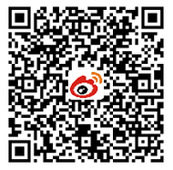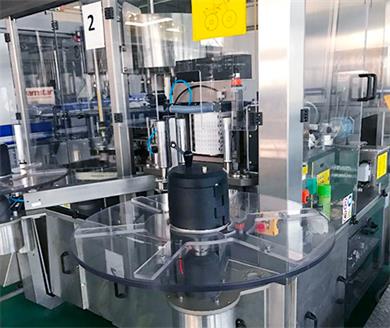Sustainable RFID Tag Designed for Safe Use in Microwave Ovens
Stora Enso's ECO Meal UHFRFID tag for the food and beverage industry has a printed paper antenna and can be applied to or built into microwaveable packaged foods without posing a fire or arcing hazard.
Apr 28, 2021Renewable materials company Stora Enso Intelligent Packaging has completed its portfolio of food and beverage RFID labels, known as the ECO RFID Food & Beverage Collection, with its ECO Meal tag that is designed for safe use on microwaveable meals. ECO Meal, which comes with a printed antenna and paper substrate, is engineered to eliminate hazards around microwave-based arcing, the company reports, while being more sustainable than traditional plastic tags.
The ECO Meal tag is part of a family of four ECO products for food, along with the ECO Hanger, ECO Stripe and ECO Cap, that enable the RFID identification of food and drinks sold at self-service stores and traditional supermarkets, according to Ville Voipio, Stora Enso Intelligent Packaging's head of sales and marketing. It also enables supply chain track-and-trace functionality. Stora Enso makes products based on renewable materials, and it released its first ECO RFID tags in 2018 to enhance its intelligent packaging products.
Traditional RFID tags come with an aluminum- or copper-etched RFID antenna, an integrated circuit and a polyethylene terephthalate layer on which the chip and antenna can be attached to the tag's paper substrate. That PET plastic layer provides high strength and flexibility, the company explains, but it is not recyclable—it has poor absorption of water, increases soil temperature and can last for up to 1,000 years in soil. Antennas do not break down in waste either, posing an environmental hazard. Traditional etching with chemicals also causes manufacturing waste and carbon dioxide emissions.
With that in mind, Stora Enso's ECO tags are designed to be recyclable. The printed UHF labels are in use globally for tracking apparel and fashion, as well as cosmetics and other retail applications. Until recently, Voipio says, "We've mainly been focusing on fashion and apparel." During the past few years, however, the company has been moving into other sectors as the demand for RFID expands.
On the retail side, the latest sector poised to adopt RFID technology has been the food industry. Food brands and traditional retailers have indicated they are seeking technology to reduce supply chain waste, improve food safety, and prevent expired or unsafe food from being sold to consumers. COVID-19 has highlighted the need for technology to help companies meet efficiency requirements and provide contactless experiences, Voipio says, as well as to manage supply chain disruptions.
According to the United Nations Food and Agriculture Organization, 1.3 billion tons of food are wasted every year. Stora Enso hopes to reduce that amount, provide an economical benefit to food and beverage companies, and offer a social benefit by ensuring food reaches consumers. According to Voipio, 20 percent of that waste could be eliminated by tracking goods via RFID.
Approximately four years ago, Stora Enso began a development project for a Chinese e-commerce company which led to the development of Stora Enso’s intelligent cabinet. The technology is now being used in a rebranded manner as a product called Selfy Store. The solution, dedicated for automated and unmanned stores in Europe, consists of Stora Enso's RFID-enabled cabinets and refrigeration units, in addition to RIFD tags on products and cloud-based software to manage inventory and enable purchasing. The ECO products for food could be used in this environment, the firm reports, as well as for traditional stores' supply chains and supply chain tracking.
The latest ECO Meal tag is designed to be attached to frozen entrees or other microwaveable packed foods. Its design includes engineering to minimize microwave energy impact, says Antti Manninen, Stora Enso Intelligent Packaging's product manager for product line tags. Traditional RFID tags should not be used in microwave ovens, since the metallic material built into them can cause arcing, but Stora Enso designed its ECO Meal label to sustain microwave energy and reduce sparking.
Other microwave-safe RFID tags are typically designed with protective layers of polymer and metal, Manninen says. In the case of the Stora Enso label, however, additional engineering is designed to disperse microwave radiation in such a way that it does not focus on the label, without adding material layers. Using NXP Semiconductors' UCODE chip, it measures 97 millimeters by 13 millimeters (3.8 inches by 0.5 inch), has a one-year shelf life, and has been tested at a TÜV Rheinland laboratory for microwave safety when attached to meal packages. In general with sustainable tags, he says, "We can keep the material structure lean," using fewer layers and less materials overall.
Also in the food-tracking portfolio is the ECO Stripe, a flag tag intended for use on aluminum cans. The antenna is positioned away from the product, the company explains, in order to enable the transmission of data despite the presence of metal. It incorporates both NXP's UCODE 8 chip and Impinj's Monza R6. The anti-tamper label is intended not only for cans, but also for other on-metal applications in the industrial and pharmaceutical industries.
In addition, the company offers the ECO Hanger tag, already in use by the apparel market, which has a traditional size and form factor for general retail items, with a fiber-based substrate. The tag was designed for high performance for the apparel and food industries, enabling companies to track goods in the supply chain and at stores, where an environment may be crowded with RFID tags grouped close together. And the ECO Cap, released this year, is a 30-millimeter (1.2-inch) tag that fits on top of plastic caps. The tag is designed to uniquely identify plastic bottles containing water or other beverages, Manninen says. It is recyclable and comes with a built-in UCODE 8 chip.
The four tags are intended to be comparably priced to apparel tags, the firm indicates. The portfolio will enable more automated management of goods at self-service stores by capturing the tag IDs of all items placed within the RFID-enabled cabinet, and by automatically updating inventory counts when a customer removes a product. The RFID tags allow stores to offer automated point-of-sale purchasing with readers that capture the tag IDs of all items a customer has selected, then charging their credit account.
The tags are currently being assessed by several food brands, including for use in bringing visibility to perishable foods in the supply chain, thereby ensuring they are delivered to store shelves while still fresh. RFID tags on food items in supply chains can enable the detection of goods that are expiring or that have been recalled, in order to keep consumers safe. To date, Voipio says, tags used in the food retail industry have typically been applied to goods at distribution centers, stores or cafeterias. In the long term, however, tagging may take place at the product source, such as where goods are harvested, bottled or manufactured.
For Stora Enso, sustainability via recyclable RFID tags offers economic, environmental and social benefits. "We started the green revolution with ECO in 2018," Voipio states, and the company has a fully patented approach to ensure the sustainability of RFID technology. "When you look at ECO as a technology, there are [fewer] layers and less waste. We believe we are providing the first comprehensive sustainable RFID for food and beverage." The product is ready to be piloted or deployed now, the company reports, with volumes targeted for the third quarter of this year.
- Impinj unlocks new IoT device opportunities with launch advanced RAIN RFID chips
- RFID is Improving the World of Healthcare
- Confidex Ferrowave Micro Delivers On-Metal RFID Tracking for Specialty Retail
- Paragon ID announces the acquisition of Security Label, European leader and one of the world's bigge















